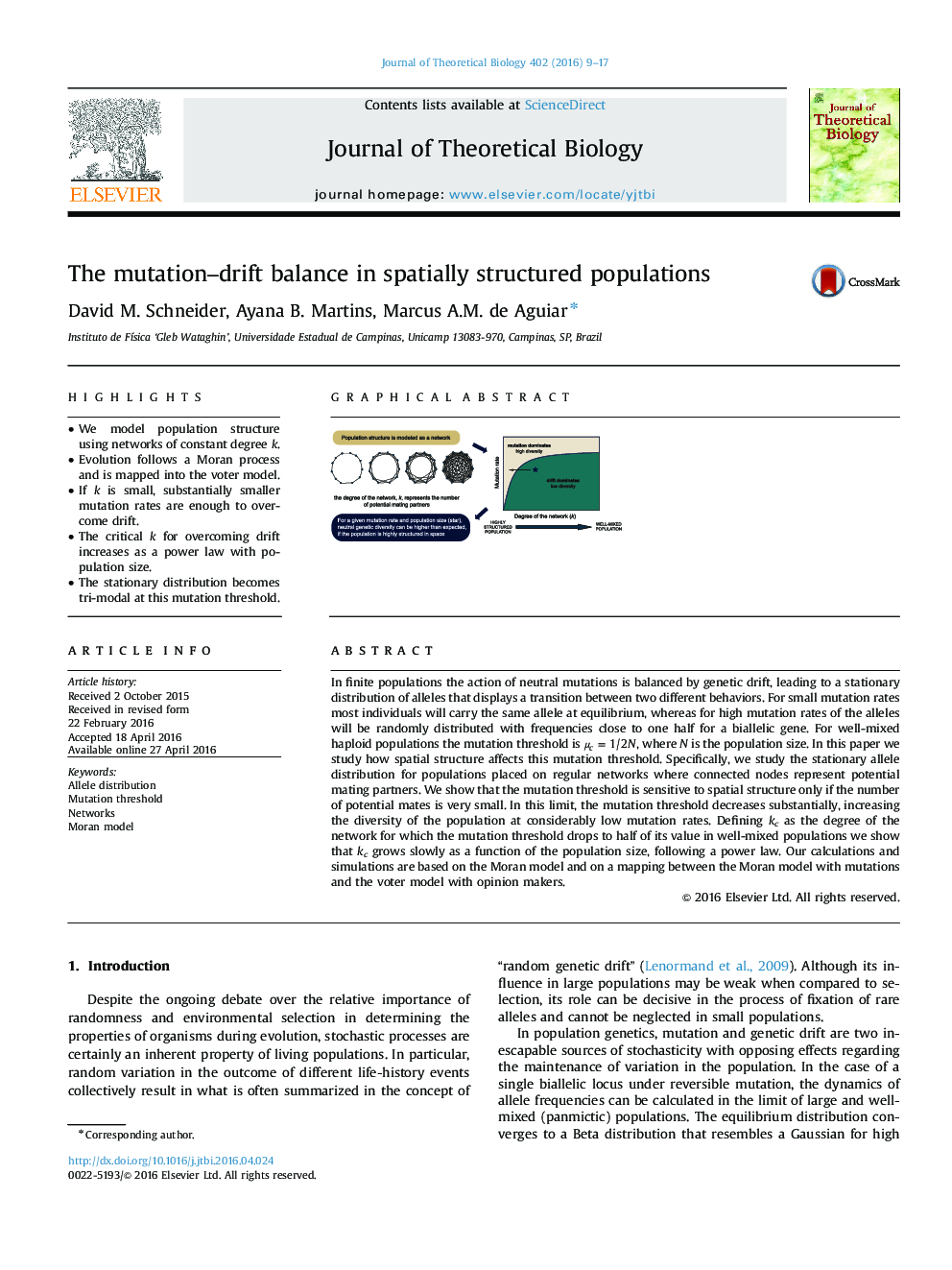| کد مقاله | کد نشریه | سال انتشار | مقاله انگلیسی | نسخه تمام متن |
|---|---|---|---|---|
| 4495793 | 1623808 | 2016 | 9 صفحه PDF | دانلود رایگان |
• We model population structure using networks of constant degree k.
• Evolution follows a Moran process and is mapped into the voter model.
• If k is small, substantially smaller mutation rates are enough to overcome drift.
• The critical k for overcoming drift increases as a power law with population size.
• The stationary distribution becomes tri-modal at this mutation threshold.
In finite populations the action of neutral mutations is balanced by genetic drift, leading to a stationary distribution of alleles that displays a transition between two different behaviors. For small mutation rates most individuals will carry the same allele at equilibrium, whereas for high mutation rates of the alleles will be randomly distributed with frequencies close to one half for a biallelic gene. For well-mixed haploid populations the mutation threshold is μc=1/2Nμc=1/2N, where N is the population size. In this paper we study how spatial structure affects this mutation threshold. Specifically, we study the stationary allele distribution for populations placed on regular networks where connected nodes represent potential mating partners. We show that the mutation threshold is sensitive to spatial structure only if the number of potential mates is very small. In this limit, the mutation threshold decreases substantially, increasing the diversity of the population at considerably low mutation rates. Defining kc as the degree of the network for which the mutation threshold drops to half of its value in well-mixed populations we show that kc grows slowly as a function of the population size, following a power law. Our calculations and simulations are based on the Moran model and on a mapping between the Moran model with mutations and the voter model with opinion makers.
Figure optionsDownload as PowerPoint slide
Journal: Journal of Theoretical Biology - Volume 402, 7 August 2016, Pages 9–17
